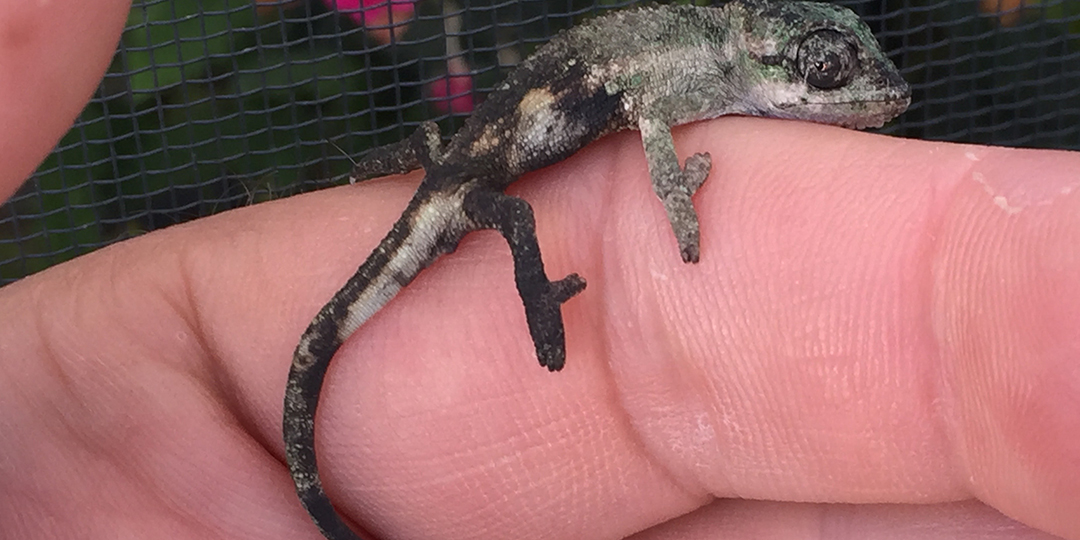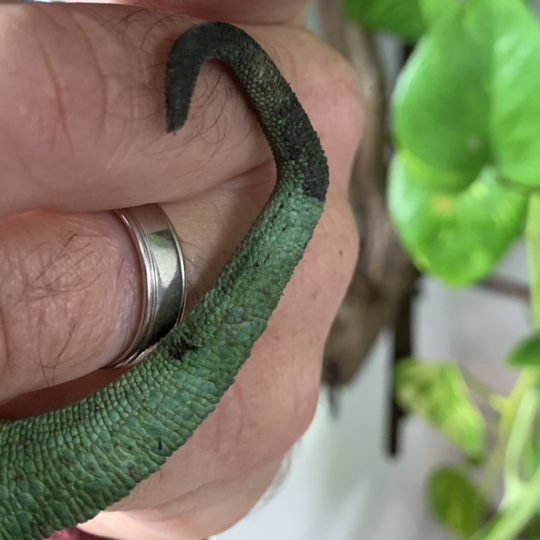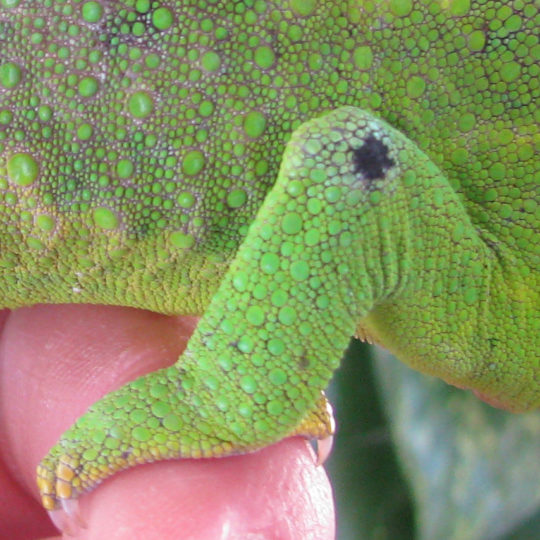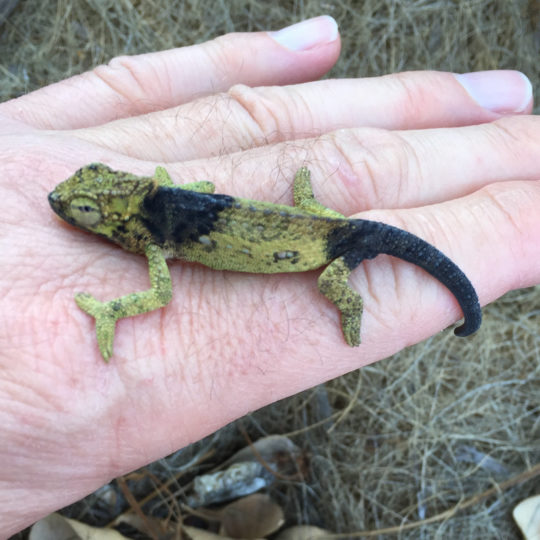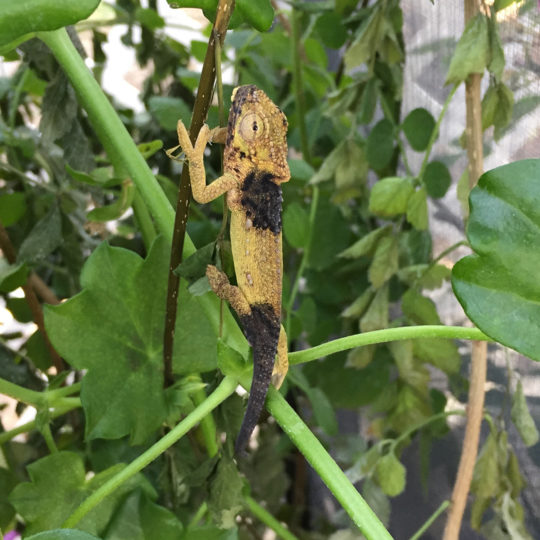Discolored Skin
Description
A chameleon’s skin is a reflection of how they are feeling and can give us insight into what is going on inside their bodies. A black or yellow discolored area is a very good indication that there is damage under the surface. It is almost the equivalent of a bruise on a human (though the mechanisms are different).
As this is just an indication of something wrong it will be up to you to gather other clues as to what the nature of the injury is. This will not always be an easy task, but this is the nature of our chameleon husbandry mission.
Symptoms
The skin is discolored. Injury usually produces a black or yellow discoloration. puss filled areas will have a light colored appearance, though this is often accompanied by a raised area as it fills with puss.
This Bradypodion thamnobates got into a fight with a sibling. Although his body showed these ugly black and sickly pale patches over the bottom half of his body there was no obvious injury. Over the course of the week, the colors faded to normal baby coloration with the mystery of what happened unsolved. This happened with a different brood of B. thamnobates two years earlier giving me the clear message that babies of this species are not good cage mates.
It was unclear what happened to the tail of this female Jackson’s Chameleon. But, the black discoloration was a clear indication that there was some fall or event that hurt the chameleon. This gave me the chance to check her entire tail and body for damage that needed medical attention. With nothing found, I determined that medical attention was not necessary and checked on her multiple times a day to ensure that the black area slowly shrunk. If it grew in size I knew there was something bad going on under the surface and a vet visit would be necessary. Blunt trauma could damage the tissue underneath even without breaking the skin and there is the danger of necrotic tissue eventually poisoning the entire body.
This tail was black showing me that there was some trauma. The tail was functional down to the tip so no bones were broken. If the tail showed it was broken this would be an immediate trip to the vet. Amputation of the tail tip would have been a possibility. That is preferable to necrotic tissue festering under the surface. In this case, the black color receded a bit every day and she showed that the tail was functional. She made a full recovery.
This white spot was a raised surface which became a warning that there was a raging infection in the oral/throat area. It was located in a way that it was not obvious by looking into the mouth. If it didn’t poke itself out like this the infection would have probably been fatal. As it was, this bump was lanced and the infection was caught. It was much deeper than expected and I was grateful for this warning sign. The vet was able to clean the area out and antibiotic therapy was successful in saving this chameleon’s life.
Treatment
Since the discoloration of skin can be an indication of a wide variety of conditions the treatment will, obviously, need to be appropriate for what caused the discoloration. In the case studies above I explain what the condition was and the treatment. See if any of those match what you are seeing. In any case, if you are unsure, the safest course of action is to take your chameleon into a chameleon experienced veterinarian.

